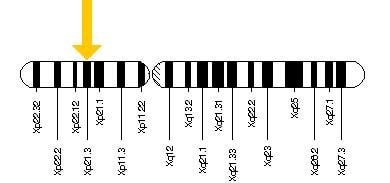University of Adelaide researchers have taken a step forward in unravelling the causes of a commonly inherited intellectual disability, finding that a genetic mutation leads to a reduction in certain proteins in the brain.
ARX is among the top four types of intellectual disability linked to the X-chromosome in males. So far, 115 families, including many large Australian families, have been discovered to carry an ARX (Aristaless related homeobox) mutation that gives rise to intellectual disability.
“There is considerable variation in the disability across families, and within families with a single mutation. Symptoms among males always include intellectual disability, as well as a range of movement disorders of the hand, and in some cases severe seizures,” says Associate Professor Cheryl Shoubridge, Head of Molecular Neurogenetics with the University of Adelaide’s Robinson Institute.
ARX mutations were first discovered by the University of Adelaide’s Professor Jozef Gecz in 2002. To date, researchers have detected 52 different ARX mutations and 10 distinct clinical syndromes.

Associate Professor Shoubridge is lead author of a new paper on ARX intellectual disability published in the journal Human Molecular Genetics.
In laboratory studies, Associate Professor Shoubridge’s team has shown that mutations lead to a significant reduction in ARX proteins in the brain, but the actual causes and mechanisms involved in this remain unknown. Her team tested six genes that the ARX protein interacts with, and found that one of them – a gene likely to be important to early brain development – appears to be adversely affected by the reduction of ARX proteins.
“This plays an important role in setting up architecture and networks in the brain, which become disrupted due to the mutation”, Associate Professor Shoubridge says.
“The discovery of this genetic link is an important step forward but there is still much work to be done. We’re now looking further at the mechanism of the reduction in ARX protein and what that means for the brain at a functional level.”
Associate Professor Shoubridge says up to 3% of the population is affected by some kind of intellectual disability, costing $14.7 billion each year in Australia alone.
“The personal cost to families is enormous, especially in the most severe cases. Being able to unravel why and how these disabilities occur is very important to us and to the many people whose lives are affected by these conditions,” she says.
Notes about this neurogenetics research
This research has been funded by the Australian Research Council (ARC) and the National Health and Medical Research Council (NHMRC).
Contact: University of Adelaide
Source: University of Adelaide press release
Image Source: The image is credited to NLM/NIH and is in the public domain.
Original Research: Abstract for “Reduced polyalanine-expanded Arx mutant protein in developing mouse subpallium alters Lmo1 transcriptional regulation” by Kristie Lee, Tessa Mattiske, Kunio Kitamura, Jozef Gecz, and Cheryl Shoubridge in Human Molecular Genetics. Published online October 10 2013 doi:10.1093/hmg/ddt503






